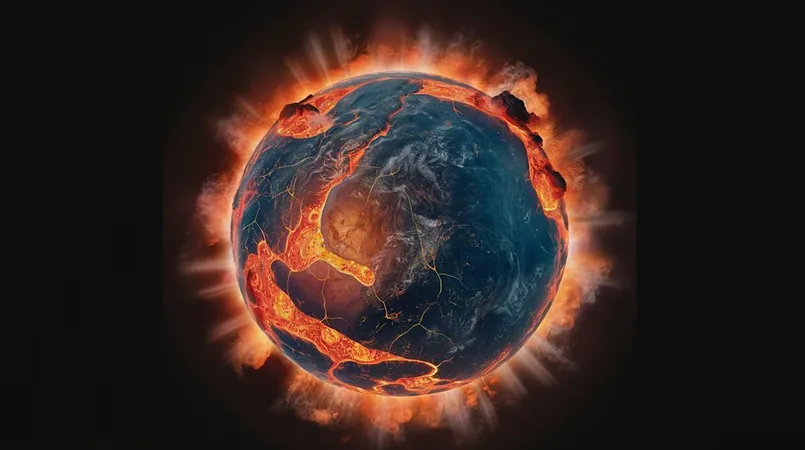
Unlocking Earth’s Secrets: The Hidden History of Its Earliest Continental Crust
2025-07-14
Author: Jia
A Groundbreaking Discovery in Earth's Geological History
In a remarkable collaboration, professors Jia Liu and Qunke Xia from Zhejiang University, along with talented PhD students, have made significant strides in unveiling Earth’s enigmatic geological past. Their recent research focuses on the Hadean eon, Earth's earliest era, dating back to about 4.4 billion years ago.
"The Hadean period is critical for understanding how Earth's continents originated," says Prof. Liu. However, the challenge lies in the fact that actual rock samples from this era are nearly nonexistent. The only known examples hail from Canada’s Acasta region, which dates to approximately 4.03 billion years ago, due to the relentless geological forces that obliterated most of Earth's earliest crust.
The Resilient zircon: A Window into the Past
Amidst this scarcity, one remarkable mineral shines: zircon. Some zircons are aged over 4.3 billion years and are primarily found in Australia’s Jack Hills. These ancient gems offer a glimpse into the planet's formative volcanic activities.
"We lack tangible samples of Hadean crust, but these zircons provide invaluable insights into what those rocks might have been like," explains PhD student Denggang Lu.
Revolutionizing Research with Data and AI
To reveal the mysteries surrounding the Hadean crust, the researchers compiled the most extensive geochemical database of igneous zircon and their associated rocks, encompassing over 14,000 zircons and 823 corresponding rock records. This database formed the groundwork for machine learning models aimed at uncovering patterns between the trace elements found in zircons and the chemistry of their host rocks.
It’s akin to reviving Earth's ancient rocks, offering detailed chemical profiles as if they had undergone laboratory tests.
A New Paradigm for Continental Formation
Prof. Liu expressed excitement about utilizing machine learning to connect zircons and their rocks, emphasizing that this method could extend our geological timeline by nearly 400 million years. Their findings suggest that the Hadean crust likely formed through convergent tectonics, akin to modern continental collisions, rather than through deep oceanic subduction.
This discovery points to early plate convergence models on primordial Earth, ushering in fresh perspectives on how Earth's crust may have developed. It not only amplifies the significance of zircon in studying ancient Earth but also marks a pivotal breakthrough in piecing together the planet’s fragmented geological narrative.
Visualizing Earth's Ancient Landscape
A compelling graphic illustrates the evolution of Earth’s earliest continental crust, derived from zircon data gathered in the Jack Hills. As this innovative research unfolds, it opens a new chapter in our understanding of Earth’s formative years, enriching the narrative of our planet's history.


 Brasil (PT)
Brasil (PT)
 Canada (EN)
Canada (EN)
 Chile (ES)
Chile (ES)
 Česko (CS)
Česko (CS)
 대한민국 (KO)
대한민국 (KO)
 España (ES)
España (ES)
 France (FR)
France (FR)
 Hong Kong (EN)
Hong Kong (EN)
 Italia (IT)
Italia (IT)
 日本 (JA)
日本 (JA)
 Magyarország (HU)
Magyarország (HU)
 Norge (NO)
Norge (NO)
 Polska (PL)
Polska (PL)
 Schweiz (DE)
Schweiz (DE)
 Singapore (EN)
Singapore (EN)
 Sverige (SV)
Sverige (SV)
 Suomi (FI)
Suomi (FI)
 Türkiye (TR)
Türkiye (TR)
 الإمارات العربية المتحدة (AR)
الإمارات العربية المتحدة (AR)